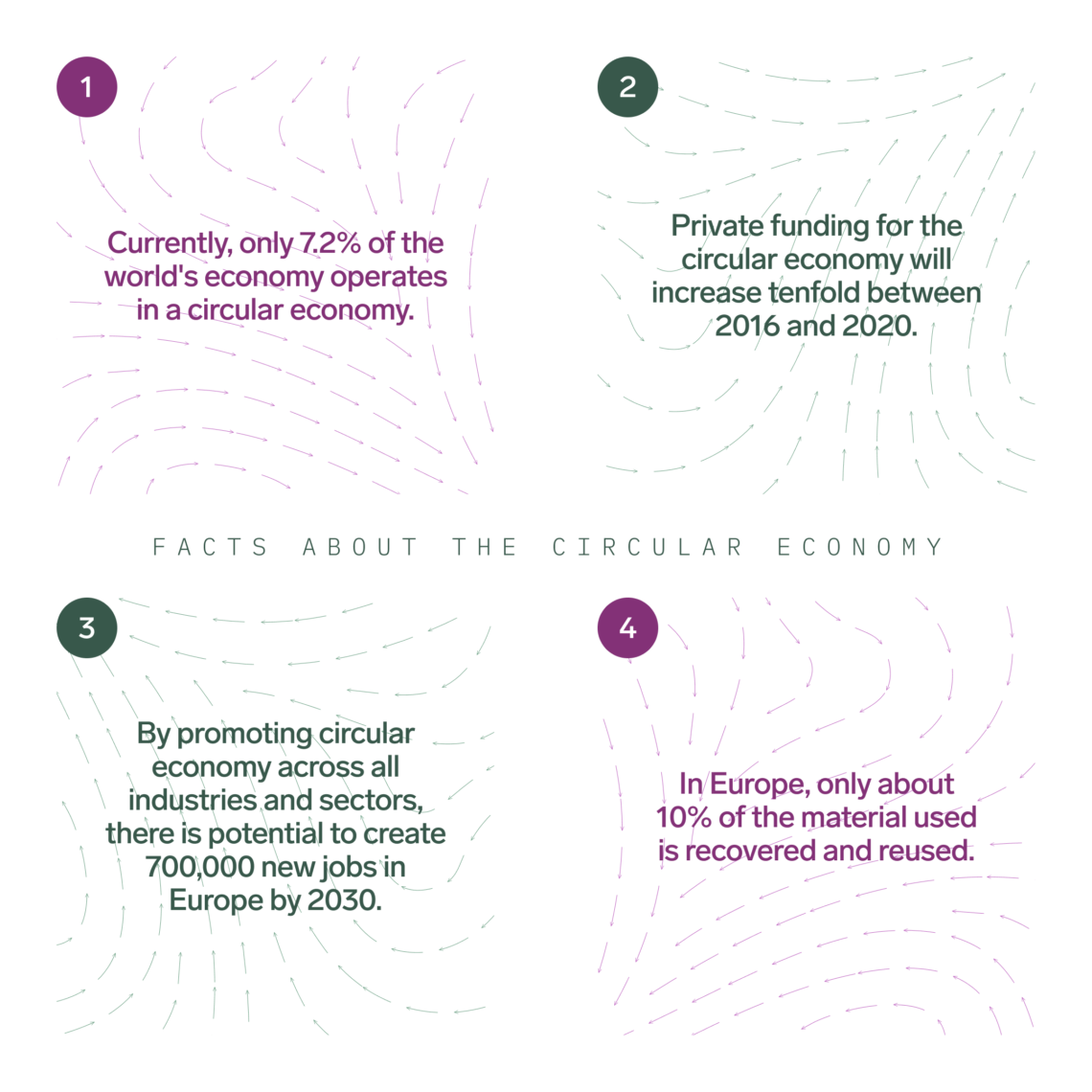Every year, the world’s day of overconsumption is reached earlier and earlier. The linear model of taking, using, and throwing away resources is unsustainably consuming our planet. To ensure a vibrant environment for future generations, we must move to a circular economy. Operating according to circular economy principles not only solves societal problems, but also helps businesses to create new revenue streams, reduce costs, meet customer needs, and respond to ever-increasing regulation.
The increasing use of raw materials is responsible for more than 90% of biodiversity loss. A world based on circular economy is one of the most essential elements in halting biodiversity loss, climate change and overconsumption of natural resources. Circular economy is an economic system that aims to reduce waste and emissions by keeping resources in use for as long as possible. It is based on the idea that everything we use should be reused, repaired, or recycled, not thrown away. Circular economy has huge growth potential and now is time for businesses to seize the opportunity.

Circular economy creates new income streams and increases resource efficiency
For businesses, circular economy enables cost savings and creates a framework for new innovations and business opportunities. New revenue streams can be created, for example, by offering leasing or take-back services instead of selling a product. Reclaimed products at the end of their life cycle can be dismantled and refurbished into new products and resold cost-effectively as remanufactured products when the need for virgin raw materials has been minimal.
Companies can also reuse or sell recycled materials from their own by-products or waste streams. Cost savings result from reduced material, energy, and waste management costs due to resource efficiency. A circular economy business significantly reduces the adverse environmental and social impacts of using virgin raw materials in its value chain, while reducing the risks associated with its operations.
In addition to new revenue streams and reduced adverse impacts, a circular economy business creates a more attractive image for customers, employees, and investors who value sustainability in their choices.
Market for recycled materials is key to promoting circular economy
Recycled materials play a key role in circular economy and can bring many benefits to companies, in terms of business opportunities, cost savings and reduced business risks. The market for more recycled materials is just taking off and there is room for a wide range of players in the market, from recycled material producers, recycled material manufacturing companies, collection and sorting companies to distributors and retailers. Each of these actors is needed to drive the market for recycled materials and circular economy.
On the other hand, in addition to the business opportunities, rapidly changing legislation and stakeholder demands are raising the importance of circular economy, and in particular the use of recycled materials in markets and value chains. These requirements, together with the previously mentioned climate change, loss of biodiversity, and overconsumption of resources, create risks for companies that threaten business continuity. Consequently, the transition to a circular economy should be seen both as a growth potential and as well as a necessary action to reduce the risks to operations.
Read more about the possibilities: Circular Economy | Gaia.fi
Circular Economy, Biodiversity, Corporate Responsibility, Sustainable Business Models, Sustainable Food Systems, Business Development and Business Strategies, Innovation Management and Innovation Processes, Marketing and Communication
tuulia.sinijarvi@gaia.fi
0407085917


